

Did you know you can embed a PowerPoint slide in a Word document? How about inserting a link to a PowerPoint presentation into a Word document?
Microsoft Word and Microsoft PowerPoint work well together in various ways. Both of these apps are included with a Microsoft 365 subscription. One thing you can do while using both together is adding a presentation into a Word document as an object. Here’s how to embed a PowerPoint slide in a Word document and why it’s a useful tool.
There are two ways you can add PowerPoint content into a Word document. You can either paste content by pressing Ctrl + V or insert it as a linked or embedded object. With the latter, you can still with the object in the original app. In this case, after inserting a PowerPoint object into Word, you can double-click the slide to use PowerPoint.
If you insert the slide into the document as a PowerPoint object, Word runs PowerPoint when you double-click the slide, and you can use PowerPoint commands to work with the slide.
When you insert an entire PowerPoint presentation as an object, the document displays only one slide. To display different slides, double-click the PowerPoint object, and then press Enter to run the slide show.
When it comes to PowerPoint and Word, you can link or embed one or more slides or embed the entire presentation. When you double-click the object, Word runs the PowerPoint slide show. However, you cannot edit the presentation within the document. And, the presentation object can be embedded only, not linked.
Note: The main difference between linked objects and embedded objects is where the data is stored and how you update the data after placing it in the Word file.
In this case, you’ve embedded an object. When an object is linked, information can be updated if the source file is modified. Linked data is stored in the source file. When you embed a PowerPoint object, information in the Word file doesn’t change if you modify the source PowerPoint file. Embedded objects become part of the Word file and, after they are inserted, they are no longer part of the source file.

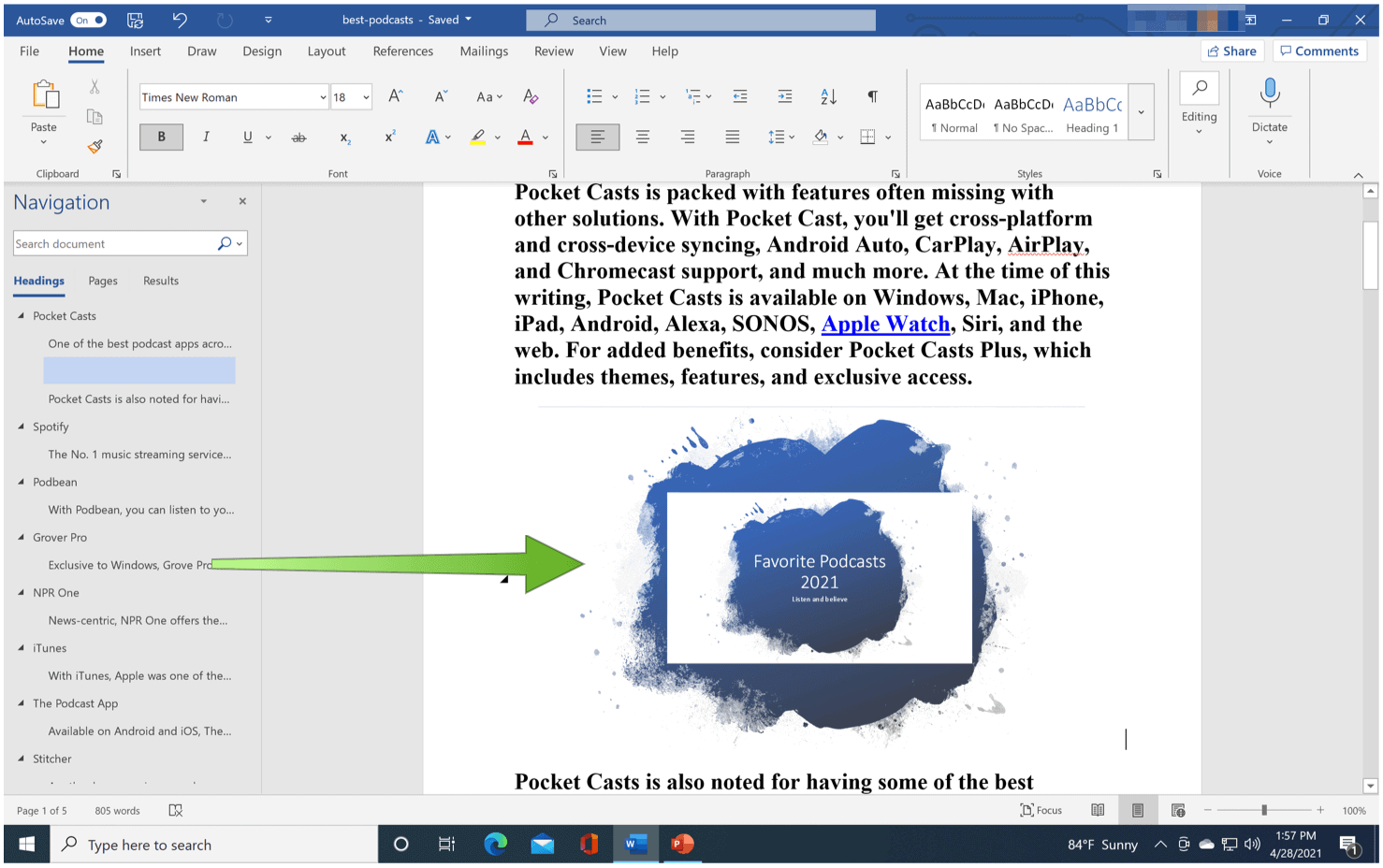
As an alternative, you can insert a link to the object by following the directions below:
In this case, you’ve inserted a link to the entire PowerPoint presentation.
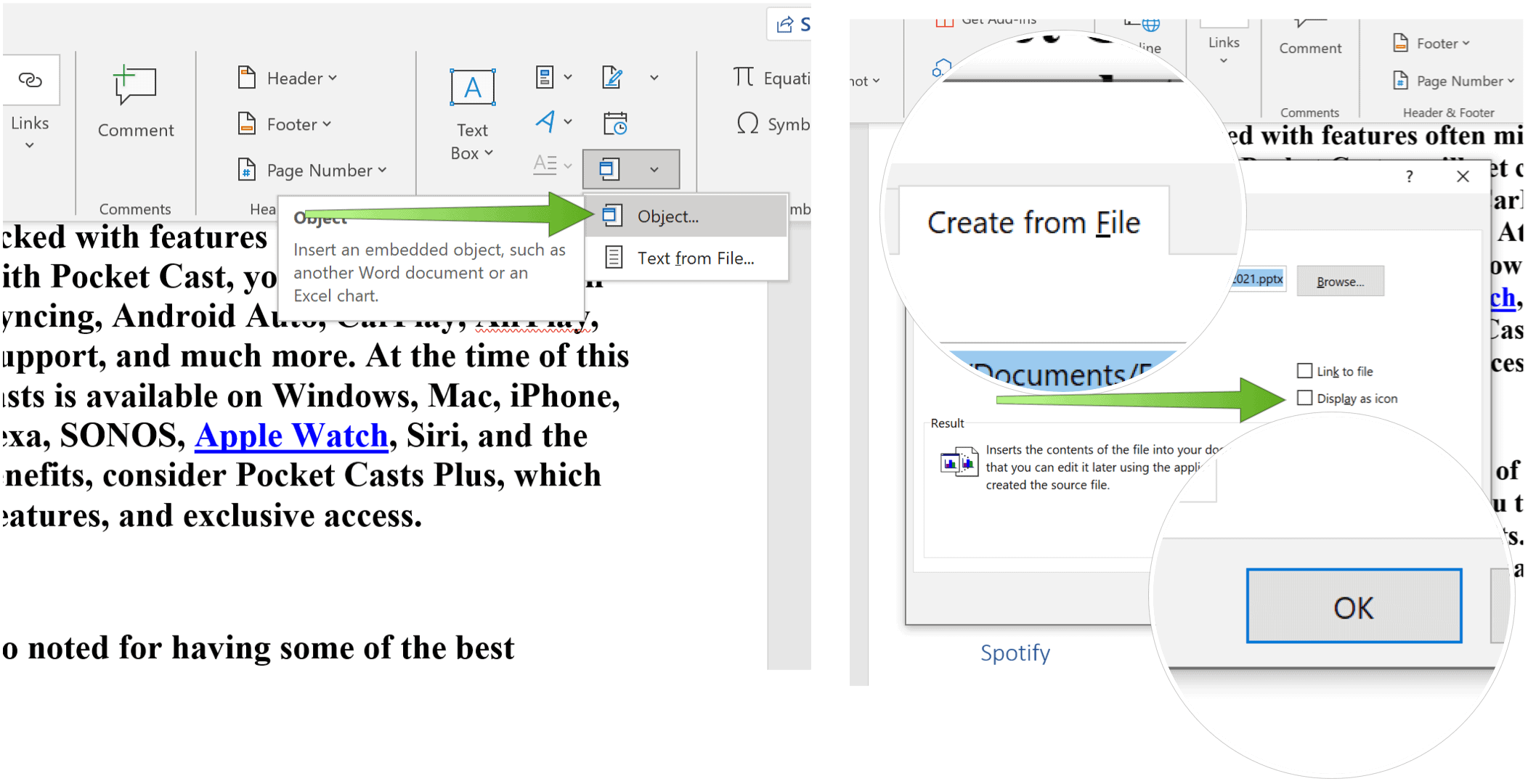
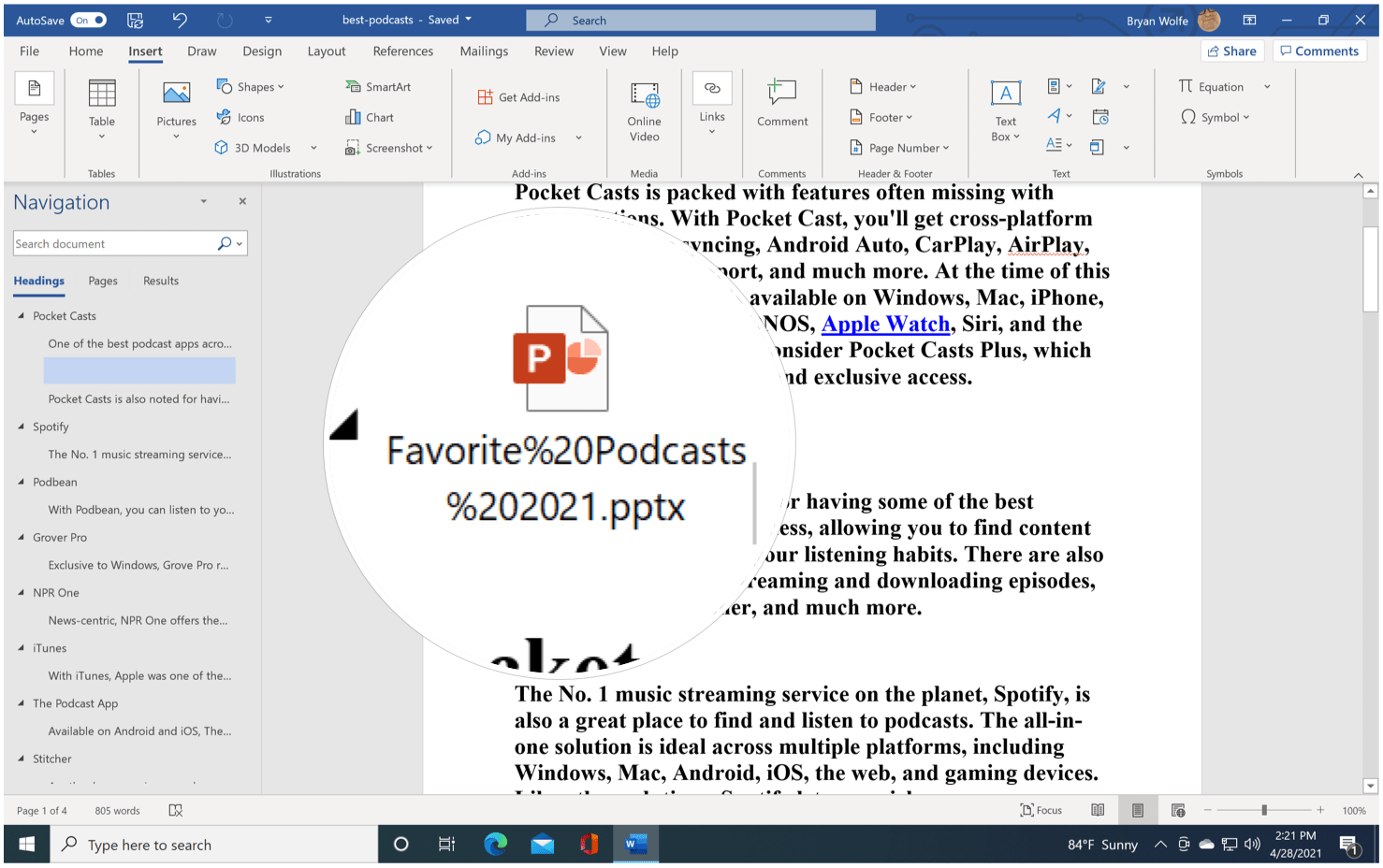
Linked objects get updated automatically. Because of this, Word updates the linked information every time the Word file is open or any time the source PowerPoint file changes while the Word file is open. However, you can change the settings for individual linked objects so that the linked object is not updated or so that it is updated only when the reader of your document chooses to update it manually.
Additionally, you can prevent Word from updating links in all the documents that you open. You can do this as a security measure, thereby preventing updating documents with files that are perhaps from an untrusted source.
You can also permanently break the connection between a linked object and its source PowerPoint file. When the connection is broken, you can no longer edit the object in the document, and it becomes a picture of the PowerPoint content.
To manually update links in Word:
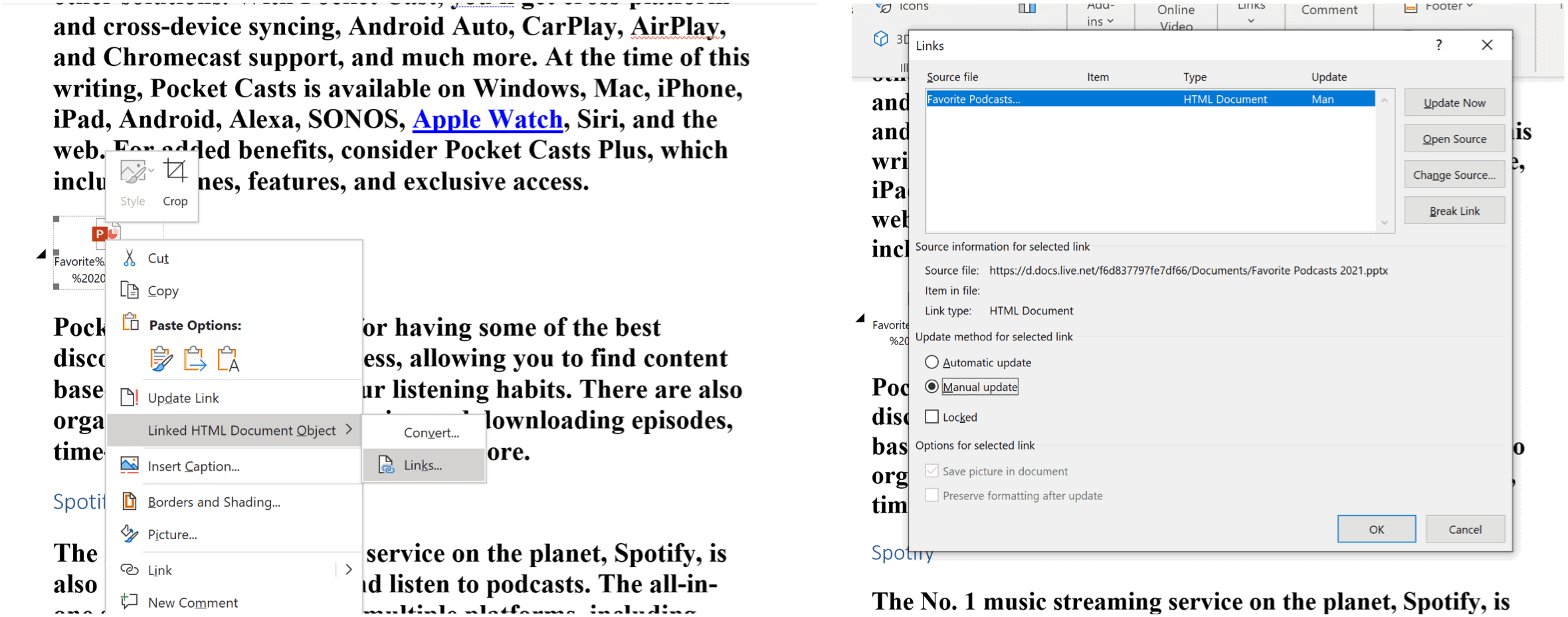
If you won’t want a linked object to get updated:
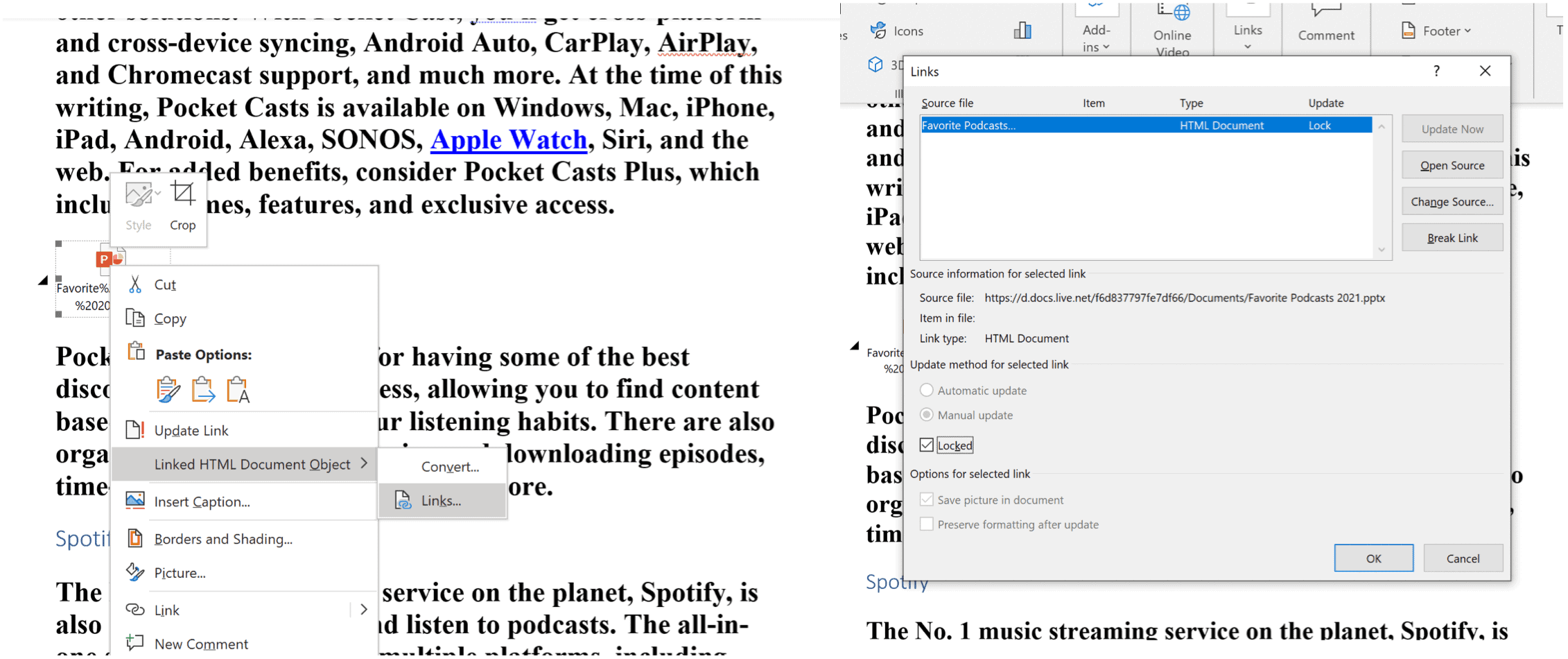
There’s much you can do with PowerPoint and Word that you might have never considered. For example, did you know you can make a PowerPoint presentation read-only or that you can convert a Word document to a PowerPoint presentation? Also, don’t forget you can get all office apps as part of a suite of software with a Microsoft 365 subscription.